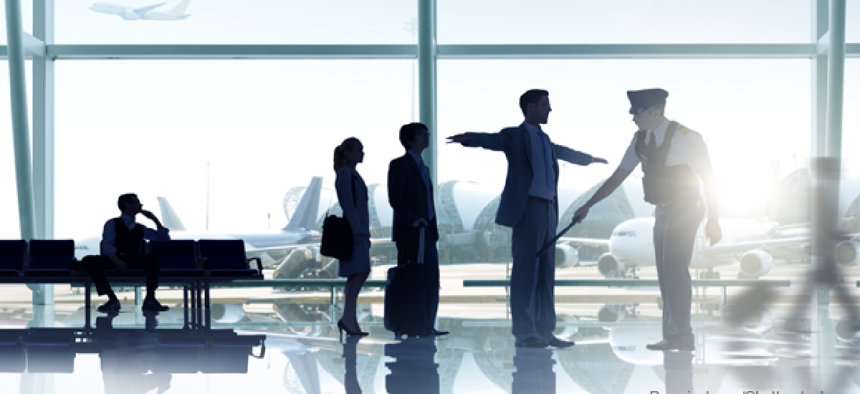DHS wants you to build a better body scanner


Connecting state and local government leaders
Or a better algorithm, at least. A new challenge project aims to accurately assess passenger body scans for threats, cutting down on false positives and speeding up airport security lines.
To speed travelers through security checkpoints in airports, the Department of Homeland Security has launched a challenge to find better ways to assess passenger body scans for threats, cutting down on the number of false positives that require manual checks and slow down lines.
For the Passenger Screening Algorithm Challenge, DHS is working with Kaggle, a Google-owned company whose platform hosts crowdsourced data science and machine learning competitions for its community of half a million data scientists. The competition aims to find algorithms that can automatically identify concealed items on passengers as they walk through scanners.
According to the challenge website, the Transportation Security Agency currently buys algorithms from the scanning equipment manufacturers. Because the algorithms are proprietary, expensive, and often updated in long cycles, TSA "is stepping outside their established procurement process and is challenging the broader data science community to help improve the accuracy of their threat prediction algorithms."
Challenge participants have cloud access to a dataset of images of volunteers presenting simulated threats. The images represent a variety of object types, clothing types and body types collected from a millimeter wave scanner called the High Definition-Advanced Imaging Technology system. Participants must predict the probability that a given body zone has a threat present.
Even a modest decrease in false positives will improve the passenger experience while maintaining high levels of security, Kaggle said.
DHS also has been experimenting with other technologies to improve the airport screening process.
On June 15, TSA and American Airlines announced they would test small computed tomography scanners at Phoenix Sky Harbor International Airport to screen carry-on bags. Airlines use CT scans on checked baggage, but the machines were considered too large and noisy for use inside the terminals.
The new CT screening equipment uses an X-ray camera that spins around the conveyor belt to create a 3-D image of a carry-on bag so officers can ensure it does not contain a threat item. The system uses "sophisticated algorithms" to detect explosives, firearms and other items banned in carry-on baggage, American Airlines officials said. If successful, the scanners could make it possible for passengers to leave liquids and electronics in their carry-on bags, further speeding security checks.
For the Passenger Screening Algorithm Challenge, DHS plans to award eight prize winners a total of $1.5 million, with the first-place solution earning $500,000. The final deadline is Dec. 15.





